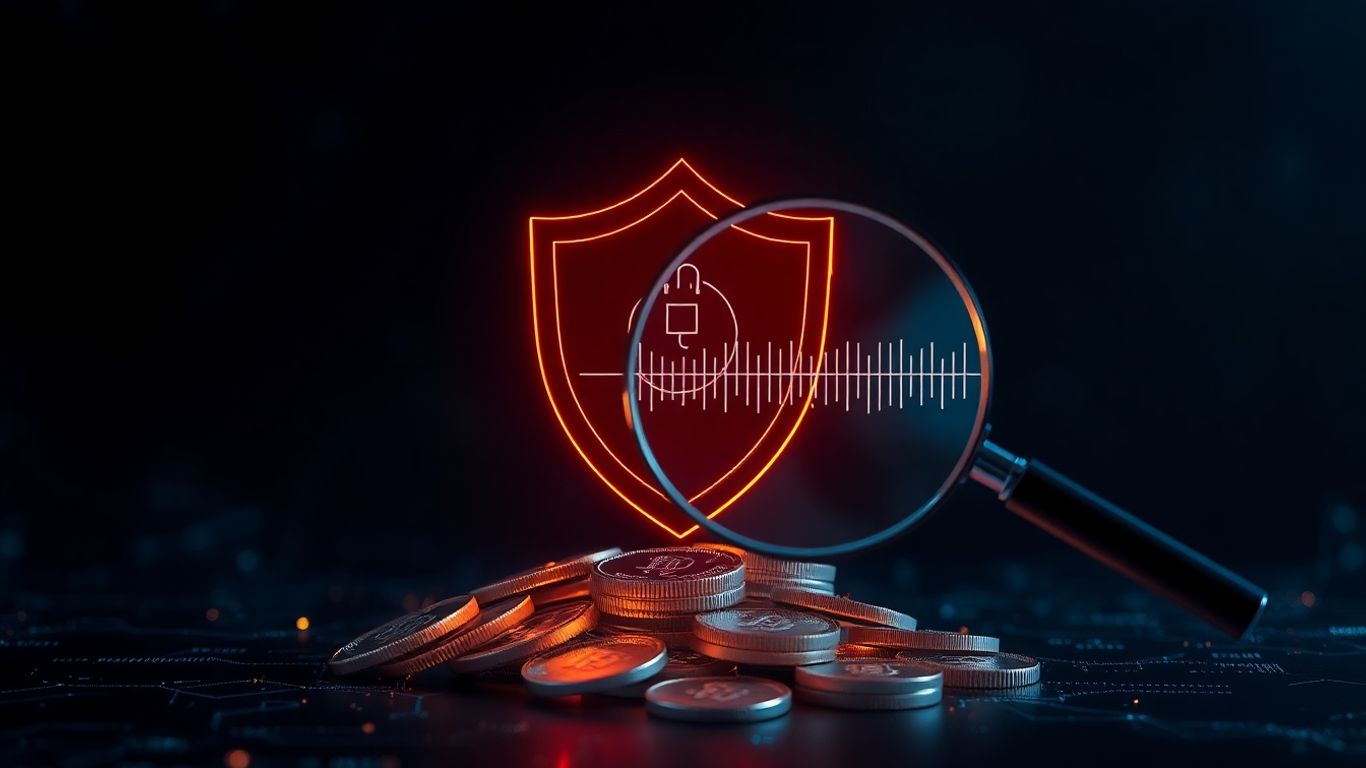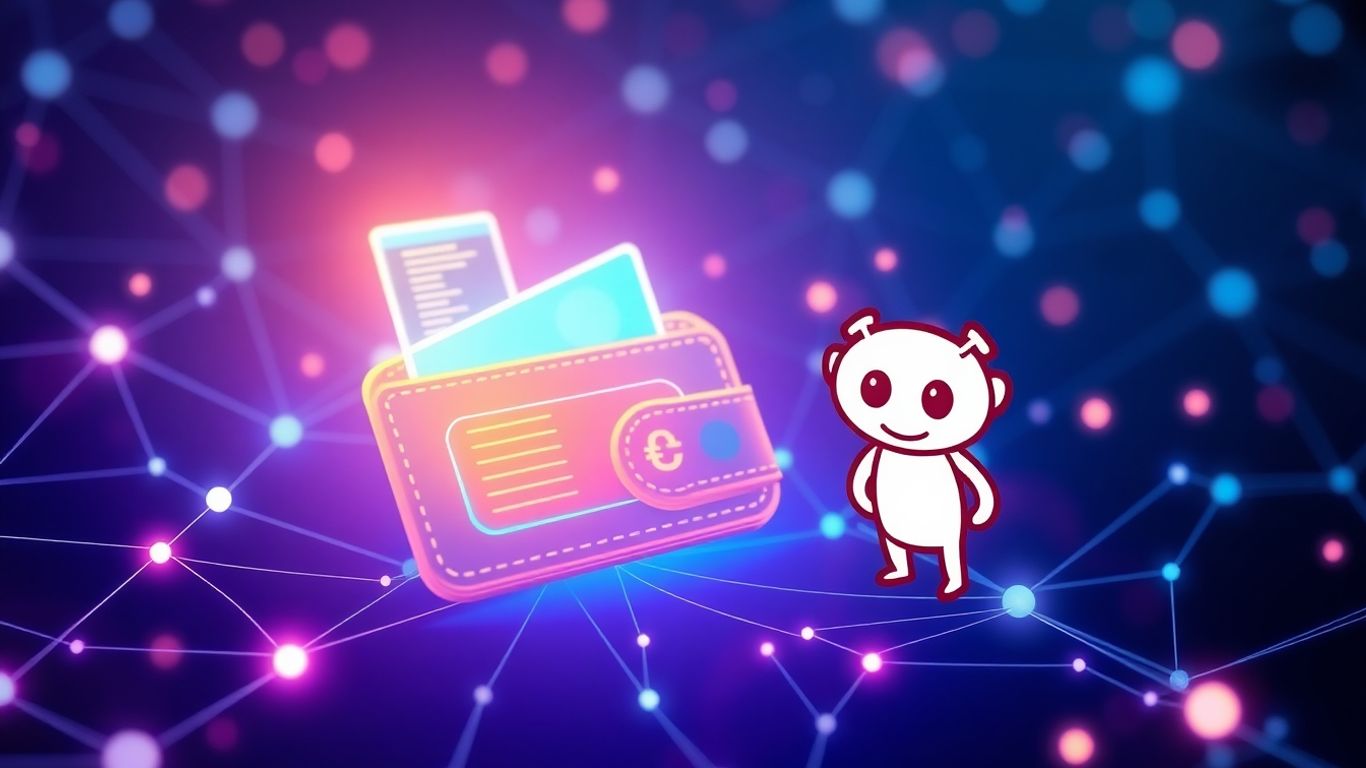[ newsletter ]
Stay ahead of Web3 threats—subscribe to our newsletter for the latest in blockchain security insights and updates.
Thank you! Your submission has been received!
Oops! Something went wrong. Please try again.
Explore MPC wallets in 2025: understand their mechanics, compare them to traditional models, and discover their growing adoption for secure digital transactions.





Alright, so let's talk about keeping our digital money safe. You know, with all the crypto stuff going on, it's getting a bit wild out there. People are losing money, and nobody wants that. I've been looking into how folks are trying to make things more secure, and this whole 'MPC wallets' thing keeps popping up. It sounds pretty complicated, but maybe it's the answer to a lot of our worries. Let's break down what these MPC wallets are all about and why they might be the next big thing for keeping our assets secure in 2025.
Think of Multi-Party Computation, or MPC, as a way for a group of people to work together on a problem without anyone having to reveal their own private information. It's like a secret handshake where everyone knows their part, but no one sees the whole picture. In the world of digital assets, this means multiple parties can work together to sign a transaction, but no single person or computer ever holds the complete private key. This is a big deal because, traditionally, securing digital assets meant keeping a private key safe, which often meant relying on a single device or person. MPC changes that by distributing the responsibility and the key itself.
So, how does MPC actually make things safer? Instead of one big, juicy private key sitting in one place, MPC splits it up. Imagine a secret code broken into several pieces, and each piece is given to a different person. To use the code, a certain number of these people (a

So, how does this whole Multi-Party Computation thing actually work when it comes to crypto wallets? It's not magic, but it's pretty clever cryptography. The core idea is to break down the private key, which is what controls your crypto, into tiny pieces. These pieces, or 'shards', are then spread out. No single person or computer ever holds the whole key. This is the fundamental shift from older methods where one key was in one place, making it a prime target.
Instead of one entity creating a private key and keeping it safe, MPC wallets split this process. Think of it like a group project where everyone contributes a part to the final product, but no one person has the entire blueprint. The key is generated across multiple independent computers or devices. When it's time to sign a transaction – that's the action that sends your crypto – these same distributed parties work together. They use their key shards to collectively approve the transaction without ever putting the full key back together. This distributed signing is key to preventing any one party from acting alone or being compromised.
This is where the 'threshold' part comes in. It's not just about splitting the key; it's about setting rules for how many pieces are needed to do anything. A common setup is a 't-of-n' scheme. For example, you might have 5 key shards (n=5) and need any 3 of them to sign a transaction (t=3). So, if you have 3 out of 5 parties available and willing, the transaction can be signed. This means even if one or two parties are offline, compromised, or just not cooperating, the system can still function. This threshold mechanism is what makes MPC wallets so resilient. It’s a smart way to balance security and usability, making sure that a single failure doesn't bring everything to a halt. You can find more details on how these schemes work in the context of digital asset security here.
Traditional wallets, even those using hardware security modules (HSMs) or complex multisig setups, often still have a central point where things could go wrong. With MPC, that single point is gone. If one device is lost, stolen, or hacked, the attacker still can't access your funds because they don't have enough key shards. The key itself is never fully assembled, so there's no single secret to steal. This distributed nature means security isn't reliant on one vault or one person's diligence. It's spread across the network of participants, making it significantly harder for malicious actors to succeed. It’s a big step up from older security models that often put all your eggs in one digital basket.
When we talk about keeping digital assets safe, it's easy to get lost in the technical jargon. But at its core, it's about how we protect that all-important private key. For a long time, the options felt pretty limited. You had your hot wallets, which are convenient but more exposed, or cold storage, which is safer but a hassle to use daily. Then came hardware wallets and multisig setups, each with their own set of pros and cons. MPC wallets, however, offer a different approach, fundamentally changing how we think about private key security.
Hardware Security Modules, or HSMs, are like Fort Knox for your private keys. They're specialized hardware devices designed to protect cryptographic keys. The idea is to keep the private key isolated within a tamper-resistant environment. While this is a strong security measure, it still concentrates risk. If an attacker figures out how to breach that single HSM, they've got the whole prize. Plus, managing and maintaining these physical devices can be a real headache, involving physical security, updates, and change control processes. MPC, on the other hand, distributes the risk by splitting the private key across multiple locations or parties. This means an attacker can't just target one point; they'd have to compromise several independent entities simultaneously, which is a much tougher challenge. It's a bit like having your valuables spread across several safe deposit boxes instead of just one.
Smart contract multisig (or multi-signature) wallets have been a popular choice for a while. They require a set number of signatures from a predefined group of participants to authorize a transaction. This is great because it removes the single point of failure associated with a single private key. However, multisig transactions are recorded on the blockchain, meaning the structure of your signers is public. This can reveal information about your security setup that you might prefer to keep private. Also, every transaction on the blockchain incurs gas fees, and multisig transactions can sometimes be more expensive. MPC wallets operate differently. They handle the signing process off-chain, at the cryptographic layer. This means the transactions that go onto the blockchain look like standard single-signature transactions, keeping your signer setup private and generally leading to lower transaction costs. It's a way to get the security benefits of multiple approvals without broadcasting the details to everyone.
Ah, the seed phrase. The 12 or 24 words that are supposed to be the ultimate backup for your crypto. We've all been told to write them down, store them securely, and never share them. But let's be honest, how many of us have actually done that perfectly? Seed phrases are notoriously difficult to manage securely. They can be lost, stolen, or even accidentally exposed. If someone gets your seed phrase, they essentially have your entire wallet. This creates a massive single point of failure. MPC wallets sidestep this issue entirely. Instead of a single seed phrase, the private key is broken into multiple pieces, or 'shares,' distributed among different parties or devices. No single share can reconstruct the private key on its own. This distributed nature means that even if one share is compromised, your assets remain safe. It's a more robust way to manage access without relying on a single, vulnerable piece of information. This shift is a big reason why many institutions are looking at MPC for digital asset custody.
Traditional security models often force a difficult choice: convenience versus robust security, or decentralization versus operational simplicity. MPC wallets aim to bridge this gap by distributing trust and control without sacrificing the user experience or the integrity of the transaction.

It's pretty wild to see how quickly MPC wallets are becoming the go-to for a lot of folks, especially when you look at who's getting involved. We're not just talking about the usual crypto enthusiasts anymore; big players are stepping in, and that's changing the game.
Remember back in the day when institutions were super hesitant about crypto? Well, that's changing, fast. By early 2025, a huge chunk of institutional investors, like 86%, were either already in or planning to jump into digital assets. And it's not just a small dip of the toe; about 59% of them were looking to put more than 5% of their total managed assets into crypto. This massive influx of institutional money means they need serious security, and MPC wallets are stepping up to the plate.
The numbers really tell a story here. The global MPC market was already chugging along at around $888 million in 2024. Now, projections show it's set to balloon to about $2.72 billion by 2034. That's some serious growth! North America has been a big player, holding a 38% market share in 2024, and the financial sector (BFSI) is leading the charge when it comes to businesses adopting this tech. It seems like everyone's realizing that having a single point of failure for digital assets just isn't cutting it anymore.
So, where are we actually seeing MPC wallets in action? It's not just theoretical. Think about:
The shift towards MPC isn't just about preventing hacks; it's about building a more robust and trustworthy digital asset ecosystem. It allows for distributed control, meaning no single person or system can unilaterally move assets, which is a massive win for security and accountability.
It's clear that MPC wallets are moving beyond niche tech and becoming a standard for secure digital asset management. The trend is undeniable, and it looks like they're here to stay.
It's not just about the tech, right? We also have to think about the rules and how MPC wallets fit into all that. As more institutions get into digital assets, regulators are paying closer attention. And honestly, MPC seems to be lining up pretty well with what they're looking for.
Think about self-custody. Traditionally, this meant you were solely responsible for your private keys, often stored on a single device or a piece of paper. That's a huge risk if that one thing gets lost or stolen. MPC changes the game by distributing the private key across multiple parties or devices. No single entity holds the whole key. This distributed nature inherently aligns with the idea of self-custody but with a much stronger security net. It's like having multiple locks on your door instead of just one.
Regulators are trying to figure out how to handle digital assets safely. For instance, rules like MiCA (Markets in Crypto-Assets) in Europe, which started applying in late 2024, and guidance from places like the New York Department of Financial Services (NYDFS) are setting standards for crypto service providers. MPC wallets naturally fit into these requirements. They help with:
The shift towards MPC reflects a broader trend where security is no longer just about protecting a single point of failure. Instead, it's about building resilient systems that can withstand various threats and meet evolving compliance demands.
So, how does this actually work in practice? Let's say you're a company dealing with digital assets. You need to show regulators that you're managing risks properly. MPC wallets can help you demonstrate this.
It's a way to build security and compliance right into the wallet infrastructure, rather than trying to bolt it on later. This proactive approach is what regulators are increasingly looking for.
When we talk about keeping digital assets safe, it's not just about today's threats. We also need to think about what's coming next. MPC wallets are built with this future in mind, which is a big deal. They're not just a temporary fix; they're designed to adapt.
One of the coolest things about MPC is that it's more of a method for managing keys than a specific type of encryption. This means that as new, stronger encryption methods are developed, MPC wallets can often adopt them without needing a complete overhaul. Think of it like upgrading the engine in your car without having to buy a whole new vehicle. The underlying technology can be swapped out, keeping your security up-to-date. This is especially important as the world of cryptography is always moving forward.
This is where things get really interesting. We're hearing more and more about
So, we've looked at how MPC wallets are changing the game for keeping digital assets safe. Instead of relying on one single point of protection, MPC splits things up, making it way harder for anyone to get unauthorized access. This technology isn't just some far-off idea; it's already being used by wallet providers and is becoming a standard for institutions dealing with crypto. As more people and companies get involved with digital assets, the need for strong security like MPC only grows. It seems like the old ways of managing keys might be on their way out, replaced by these more secure, distributed methods. It's pretty exciting to see how MPC is making things safer and easier for everyone involved in the crypto space.
Think of MPC like a secret club for your digital information. It's a way for several people or computers to work together on a problem, like signing a transaction, without any single person seeing all the secret details. Each person only has a small piece of the puzzle, and they combine their pieces in a special way to get the job done without ever revealing their full secret.
Normally, a crypto wallet keeps its private key in one place, like a single safe. If someone breaks into that safe, they get everything. MPC is like splitting that private key into many tiny pieces and hiding those pieces in different safes, held by different people. To open the main safe (or sign a transaction), you need a certain number of those people to come together and use their pieces. This makes it super hard for hackers because they'd have to break into many places at once.
Not quite! Multisig is like having multiple keys to open one lock, and it's usually visible on the blockchain for everyone to see who has a key. MPC is more advanced. It happens behind the scenes, at a deeper technical level. It creates a regular-looking transaction signature, but the key parts are split up and managed using MPC, making it more private and often more efficient than traditional multisig.
As more money flows into digital assets, security becomes a huge deal. MPC offers a much stronger way to protect large amounts of digital money compared to older methods. It reduces the risk of losing everything if one part of the system gets compromised. This makes it more appealing to big investors and companies who need top-notch security to handle significant sums.
Yes, MPC is actually a good fit for many new rules about how digital assets should be handled. Because it splits control and requires multiple parties to agree on actions, it aligns well with ideas like 'self-custody' (where you control your own assets) and 'segregation of duties' (where different people are responsible for different parts of a process). This makes it easier for businesses to follow the law.
MPC technology is constantly improving. It's flexible, meaning it can be updated to work with new security methods, even ones that can protect against future super-powerful computers (called post-quantum cryptography). As more people use MPC, it's likely to become even faster and more widespread, potentially replacing older ways of storing and managing digital assets.


